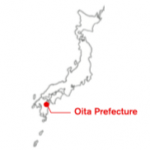 Located on the northeastern edge of Japan’s Kyushu Island, Oita Prefecture — or the onsen mecca, as it’s sometimes known — has many features that draws in visitors from all over the world. Characterized by its hot, balmy summers yet mild, chilly winters, the area is chock full of sightseeing and tourist hotspots.
Located on the northeastern edge of Japan’s Kyushu Island, Oita Prefecture — or the onsen mecca, as it’s sometimes known — has many features that draws in visitors from all over the world. Characterized by its hot, balmy summers yet mild, chilly winters, the area is chock full of sightseeing and tourist hotspots.
One of the prefecture’s main draws, however, is its cuisine. In fact, Usuki, located on Oita’s coast, was certified by the UNESCO Creative Cities Network for its food culture on Nov. 8, 2021.


A majority of the region’s specialty dishes include chicken, a staple with a deep and long-standing relationship with the locals. People in Oita Prefecture consume a lot of chicken, reportedly eating more of it than any other prefecture of Japan. Until recently, it wasn’t unusual for households to raise chickens of their own, keeping a few to produce and fertilize eggs and using the rest to fill their plates. A few of the dishes that originated in the area have become so emblematic that they’re known as Oita’s “soul foods.” One such dish, Toriten, is a fried chicken Tempura that is said to originate from a restaurant in Beppu. Juicy, locally raised chicken is coated in tempura batter and fried until it’s crispy and gives off a mouthwatering golden-brown hue. It’s typically paired with either mustard or ponzu sauce. Now, at first glance it may appear to be your run-of-the-mill fried chicken, but what makes Toriten so special is how varied the flavor is between shops. Each establishment puts its own little twist on the dish, such as serving it with different sauces or even frying it twice. Each eatery brings its own unique take, giving patrons a wide range of delicious flavors to choose from.
Another of Oita’s staple dishes is Gameni, braised chicken from the Hita area. Popularly made during festivals or the New Year’s holidays, it’s become a sort of a celebratory dish that people gather around during good times. Long ago, soft-shelled turtle (kame) meat was also an ingredient in the dish, which is where it gets its distinctive name.
 Tori-meshi is another traditional Oita specialty with a folksy backstory. Said to have been originally made with pheasant and pigeon meat by a local hunter, this chicken and rice dish featuring fresh burdock was made on celebrative occasions such as festivals or family gatherings.
Tori-meshi is another traditional Oita specialty with a folksy backstory. Said to have been originally made with pheasant and pigeon meat by a local hunter, this chicken and rice dish featuring fresh burdock was made on celebrative occasions such as festivals or family gatherings.
 Even dishes that are seen in other parts of the nation have their own Oita twist thanks to a bevy of sauces flavored with Kabosu, a juicy citrus fruit similar to Yuzu that’s used as a substitute for vinegar in many dishes. Tebasaki (fried chicken wings), Karaage (fried chicken nuggets) and Yakitori (skewered grilled chicken) in Oita can take on flavors you can’t find anywhere else in the country.
Even dishes that are seen in other parts of the nation have their own Oita twist thanks to a bevy of sauces flavored with Kabosu, a juicy citrus fruit similar to Yuzu that’s used as a substitute for vinegar in many dishes. Tebasaki (fried chicken wings), Karaage (fried chicken nuggets) and Yakitori (skewered grilled chicken) in Oita can take on flavors you can’t find anywhere else in the country.
Chicken isn’t all that’s on the menu in Oita, however, as the prefecture is also renowned for its use of flour. In Oita Prefecture where plateau farming was developed, there are many lands which were not suitable for cultivating the national staple food of rice.
Instead, the cultivation of field-based grains has been popular for centuries. As most of this grain was made into flour, many foods revolving around this ingredient came about as a result.
 The culture of flour consumption gradually spread to different parts of the prefecture as exemplified by a typical dish called Dango-jiru, a miso soup with many ingredients, including flour dumplings made with freshly kneaded wheat flour. Although, Dango dumplings typically have a round shape, the Dango for this dish, which have a chewy texture that’s firmer than Udon noodles, are hand-stretched into thin strips to absorbs the flavors of the broth in which they are prepared. Despite not looking much like your typical dumpling, the dish takes its name from the fact that the Dango are prepared in a way similar to the norm. Several different dishes can be made using the same Dango (noodles).
The culture of flour consumption gradually spread to different parts of the prefecture as exemplified by a typical dish called Dango-jiru, a miso soup with many ingredients, including flour dumplings made with freshly kneaded wheat flour. Although, Dango dumplings typically have a round shape, the Dango for this dish, which have a chewy texture that’s firmer than Udon noodles, are hand-stretched into thin strips to absorbs the flavors of the broth in which they are prepared. Despite not looking much like your typical dumpling, the dish takes its name from the fact that the Dango are prepared in a way similar to the norm. Several different dishes can be made using the same Dango (noodles).
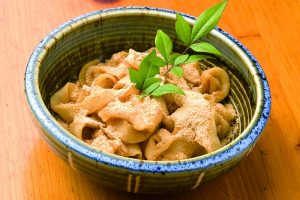 Yaseuma, another traditional flour-based snack boasts a simple, homey flavor and is prepared by kneading flour and water into thick, wide and flat noodle shapes, which are then boiled and sprinkled with sugar and sweet Kinako flour made from finely ground roasted soybeans. The name Yaseuma is said to date back to the Heian Period. When a young lord demanded food from his nanny Yase, she gave him thin, flat flour dumplings sprinkled with Kinako (roasted soybean flour). He enjoyed it so much that he repeatedly asked for the snack, saying, “Yase, uma (uma is a way children refer to food)!” Because of this, the snack became known as Yaseuma.
Yaseuma, another traditional flour-based snack boasts a simple, homey flavor and is prepared by kneading flour and water into thick, wide and flat noodle shapes, which are then boiled and sprinkled with sugar and sweet Kinako flour made from finely ground roasted soybeans. The name Yaseuma is said to date back to the Heian Period. When a young lord demanded food from his nanny Yase, she gave him thin, flat flour dumplings sprinkled with Kinako (roasted soybean flour). He enjoyed it so much that he repeatedly asked for the snack, saying, “Yase, uma (uma is a way children refer to food)!” Because of this, the snack became known as Yaseuma.
Jiriyaki is a flour-based sweet treat that’s a crowd favorite in Bungoono, the place where it originated. After dissolving flour in water, the resulting dough is baked in thin sheets similar to crepes before finally being rolled in finely crushed brown sugar. They are sometimes also rolled in a sweet pumpkin paste. This snack’s popularity stems from its simplicity and familiar flavor. There is a bit of a debate as to the origin of its name. While some believe it to be based on the onomatopoeia “jiri jiri,” which represents the sound of dough slowly baking, others speculate that it takes its name from “jirii” a word that means loose in the local dialect. Other cities even have different names for the dish, such as Hekoyaki in Hita and Taratarayaki in other areas. No matter what it’s called, however, there’s very little debate when it comes to its deliciousness.
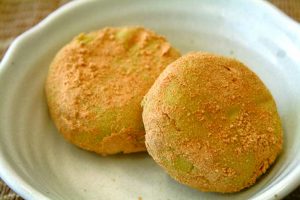 Sorakitamochi is one more local sweet that got its start in Oita Prefecture, originating in Himeshima Village. Flour plays a critical role in the recipe for this sweet potato confectionery. The potatoes are soft boiled, covered with flour then kneaded over a fire to create a skin. While that’s happening, more sweet potatoes are made even sweeter with some sugar and made into a paste which is wrapped in the previously made skin.
Sorakitamochi is one more local sweet that got its start in Oita Prefecture, originating in Himeshima Village. Flour plays a critical role in the recipe for this sweet potato confectionery. The potatoes are soft boiled, covered with flour then kneaded over a fire to create a skin. While that’s happening, more sweet potatoes are made even sweeter with some sugar and made into a paste which is wrapped in the previously made skin.
The name Sorakitamochi came to be as it could be made quickly and saying “Sora, kita! (Here it comes!)” It was an ideal dish to serve unexpected guests. This certainly was the case in the old days as every house had a stock of boiled sweet potatoes raring to go.
By using wheat flour as a base ingredient, these dishes are high in nutrition and many are quite popular among not only the locals, but also Oita visitors.
So, if you find yourself wanting a taste of one or all of these dishes, or even just a taste of the local culture that inspired them, you simply can’t go wrong with a trip to Oita Prefecture.
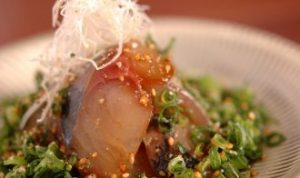
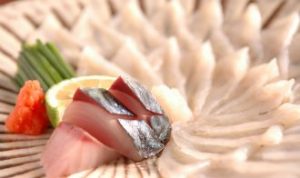
For those unbale to make the trip, some of these treats are also available at the Zarai Oita restaurant in Ginza, Tokyo. Zarai Oita brings authentic Oita cuisine a little closer to home, as nearly all of its ingredients are sourced directly from the area; even flown in directly in the case of some seafoods, like Aji and Saba mackerel. Much of the staff also hails from Oita and even the furnishings and tableware can be sourced to the prefecture. Of course, no visit would be complete without a stop at the on-site Oita-themed gift shop.
Top quality and a pleasant atmosphere are the main goals of Zarai Oita, a little piece of Kyushu in Tokyo. For more information about Zarai Oita, please visit https://japanrestaurant.net/en/shop/zarai-oita-ginza/.
Story by Ryan Alexander Masterson
From WINING & DINING in TOKYO 60








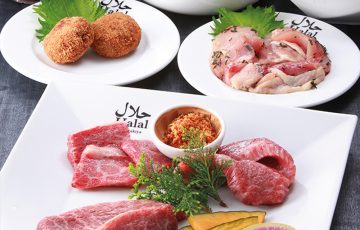
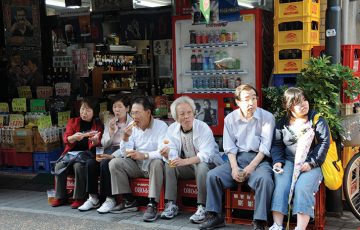

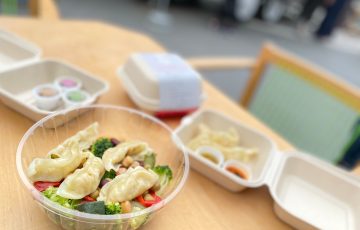
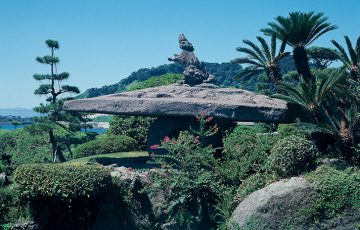



Recent Comments